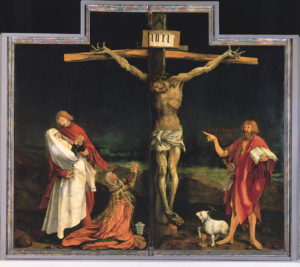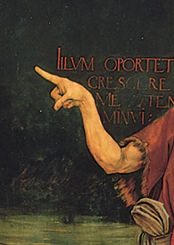Interview with Tom Kuhn: Part 1
Tom Kuhn is Professor of Twentieth-Century German Literature and Fellow of St Hugh’s College. His main research interests are in political literature in the 20th century. He has worked particularly on Bertolt Brecht, and is the series editor of the main English-language edition of Brecht’s works.
email: tom.kuhn@st-hughs.ox.ac.uk
Brecht on Theatre and Brecht on Performance, both coedited with Marc Silberman and Steve Giles (London: Bloomsbury/Methuen Drama 2014)
Connections to the GCSE, AS and A level specifications
- Artistic intentions
- Social, cultural, political and historical context
- Theatrical style
- Theatrical purpose
PC: How would you introduce Brecht’s ideas?
TK: Brecht is, of all writers, somebody who wouldn’t have said there was a right answer to a question. So it is sad to reduce it to just the famous ideas and terminology about the theatre. I think it is much more useful to think about where he was historically. There were very pressing contemporary political concerns, above all to do with resisting Nazism. In addition, Brecht was reacting against the then dominant tradition of the theatre, Naturalism. In a production of an Ibsen play, for example, a living room needs to look as much like a living room really might look and the actors play their roles as ‘real people’, as if the audience were not there. If you just start with two things like that: the desire to engage with contemporary politics and the boredom with that sort of theatre, that’s almost enough to develop a whole set of new ideas about the theatre. You don’t need words like Epic and Verfremdung and things like that, although yes, maybe you could introduce those as well.
PC: Do you think rooting Brecht in that context means that students can begin to think like him?
TK: Yes. If you set out with the idea of a theatre which doesn’t depend on pretence. On the pretence to be something enclosed, which it isn’t, but seeks to engage the audience, then you can quite quickly get through to an understanding of an ‘Epic Theatre’, which is mediated: where the stories are told by somebody for a purpose. It’s not just that you go to see a world created for you, but you go to see a world created for you by somebody who has a reason for doing it. So there is always that sense that you are being shown something by somebody, for a purpose, which is really what the Epic means.

This is one of my favourite ways of understanding the Epic. So this is a famous late medieval altar piece known as the Isenheim Altar, it’s by Matthias Grünewald. And we know that it made a huge impression on Brecht when it came to Munich in the First World War, because he mentions it in his diary. Not only he, but also his school friend Caspar Neher writes about it.
PC: Who went on to be his designer?
TK: Who went on to be his designer. And here you’ve got the crucifixion, and we have the historical participants in that scene: Mary Magdalene and Mary the mother of Christ being comforted by John the Evangelist. On the other side we have John the Baptist, but he was supposed to be long dead by the time of the actual historical event. So what is he doing in the scene?

There he is, holding the book of the prophecy of what is going to happen and pointing backwards. And he has his own speech bubble which is a Latin quotation from John the Baptist saying that “He must increase, but I must decrease.” With his symbol, the lamb and cross, at his feet. This part of the picture belongs on a different time scale, a different sort of level altogether from the crucifixion itself. And he’s also, well, he is not exactly looking out at the audience, but he is looking away from the scene, out into the world. He is mediating the scene behind him and explaining the importance of it and by his presence saying: this isn’t just a man on a cross, this is part of a bigger story.

One of his later designers, I think it was Karl von Appen, said that all of Brecht’s theatre was basically designed to bring this pointing finger into the theatre. It’s a slightly elongated and exaggerated finger. That’s what he wanted to bring into the theatre. That sense of mediation, of the peculiarity of the events he shows, of the potential greater significances, that, for example, Mother Courage is not just Mother Courage but is part of a bigger story (in this case the story of capitalism and war).
PC: So you think you could start with this image when teaching about Brecht, rather than the terminology?
TK: Yes, absolutely. And Brecht encountered this picture long before he formulated any of his famous ideas.
Summary
- Start with Brecht’s social, political, cultural and historical context when looking at his work for the first time.
- Brecht lived in exile when Nazism took over Germany so he wanted his work to engage with contemporary politics.
- Brecht was bored with the Naturalism that dominated theatre in Europe during the later 19th Century and early 20th Century.
- Brecht’s response to his historical context was to develop theatre that engaged the audience directly.
- Brecht’s theatre is mediated: someone is telling a story for a purpose – Stories are narrated or the audience knows the actor is acting.
